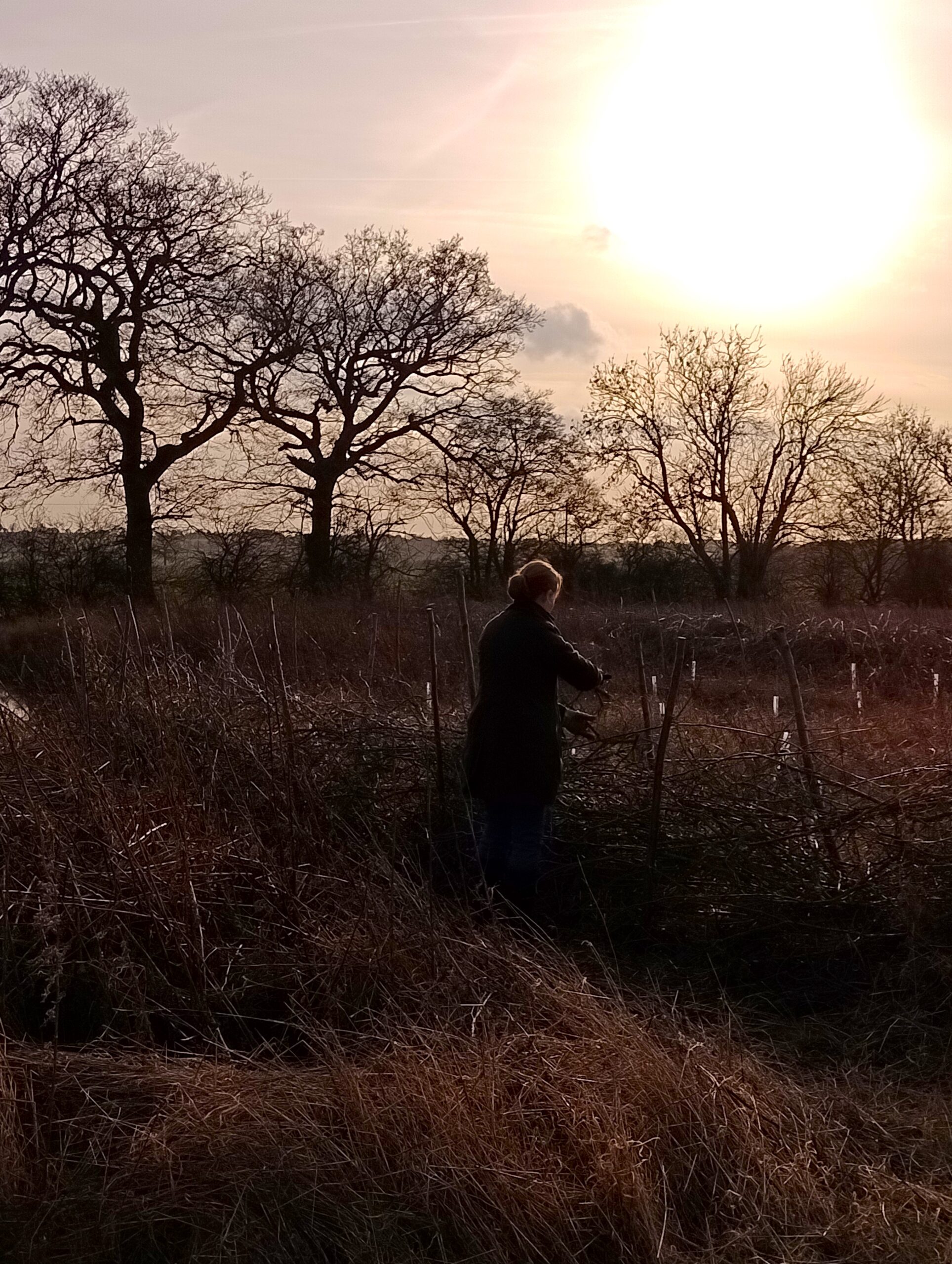
Our amazing volunteers have been hedgelaying and dead hedging this winter



Hedgelaying
This January and February I have been so lucky to have some wonderful volunteers here helping me with hedge mangement.
You can read more about the importance of hedgerows here.
The wonderful thing about hedgelaying is that the branches we cut off enable me to make more dead hedges.
Hedge laying is an old practice which exploits the plants natural ability to regrow when cut or eaten to create a strong practical stock proof fence for humans to keep our animals contained. It also has the amazing advantage of creating a thick hedge which is perfect for wildlife as a home, food source and transport corridors.
Dave has just been amazing this winter he has helped me do some much work. I am so grateful. It is a 2-person job only. Wielding an axe or saw and branches coming down on top of you becomes quite dangerous with more people.
The stems are trimmed up and cut towards the base and laid over at a 45-degree angle and woven together. You can see we have some nice field maples in the hedge. We have left these to grow up to become hedgerow trees. Over the next few years this will thicken up and grow out but that strong base will remain. I will trim it periodically to encourage dense growth but ultimately, I want this to be a large and deep hedge to provide a refuge for birds like the Nightingale, a bird I have never seen or heard. They need really thick growth to nest in.

Deadhedging
The pile of cuttings and branches, so many thorned (sorry guys!) are woven between uprights to create a dense and wonder full ‘dead hedge’ which creates:
- A home for wildlife, hiding places and nesting habitats for birds and mammals and hibernation spaces for hedgehogs and reptiles.
- Food for insects.
- And as they rot down the nutrient are recycled back to into the earth rather than being burnt and so releasing the carbon in the wood.
Why do I love them too?
They can be used to create natural barriers to protect my young trees and shrubs from deer of which we now have far too many in this country now. Deer are having a severe impact on both farming, the production of food and the regeneration of woodland and the survival of our wildflower which they also think taste delicious.




